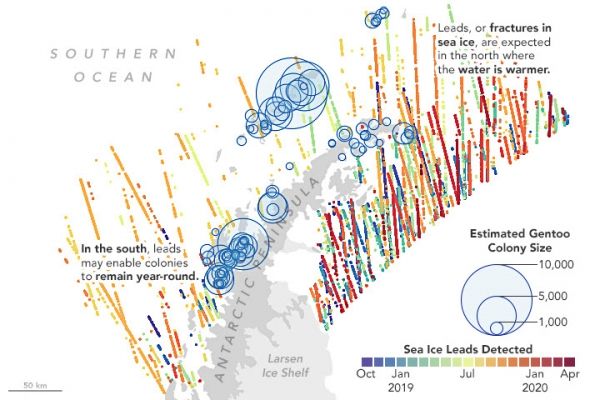Recent censuses of the tuxedoed inhabitants of the Antarctic Peninsula have shown intriguing differences between species. Populations of Adélie and chinstrap penguins are declining, while populations of gentoo penguins are growing. Remote sensing data are helping scientists figure out why.
“The gentoo penguin is a climate change winner, with populations moving farther south than we have ever seen them,” said Michael Wethington, a graduate student at Stony Brook University. “New colonies generally happen very rarely, but we have spotted a slew of new ones in past five to ten years.”
Wethington thinks gentoo penguins might be taking advantage of food sources farther south along the peninsula—a move that requires sea ice conditions to be just right. Populations of krill, a staple of the penguin diet, flourish where there is ample sea ice. But suitable penguin habitat requires at least some openings in the ice where they can access the ocean to hunt and forage. And because gentoos overwinter near their summer breeding colonies, their survival each year depends on nearby “hunting holes” that stay open throughout the cold, dark austral winter.
Continue reading at NASA Earth Observatory
Image via NASA Earth Observatory


